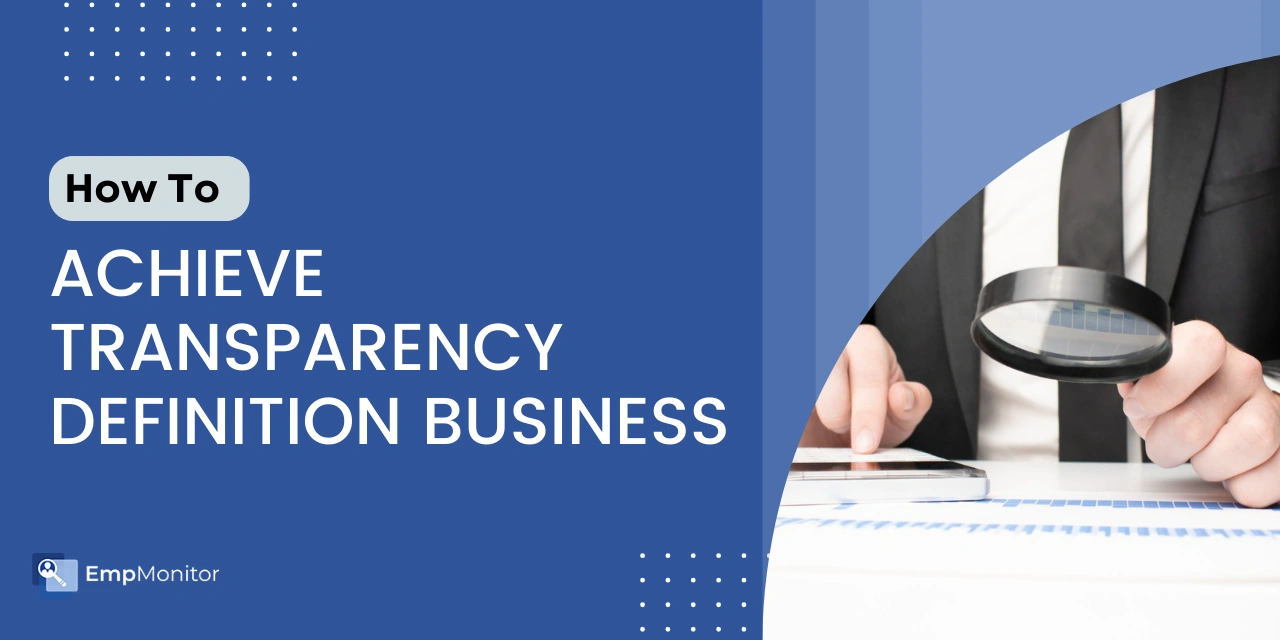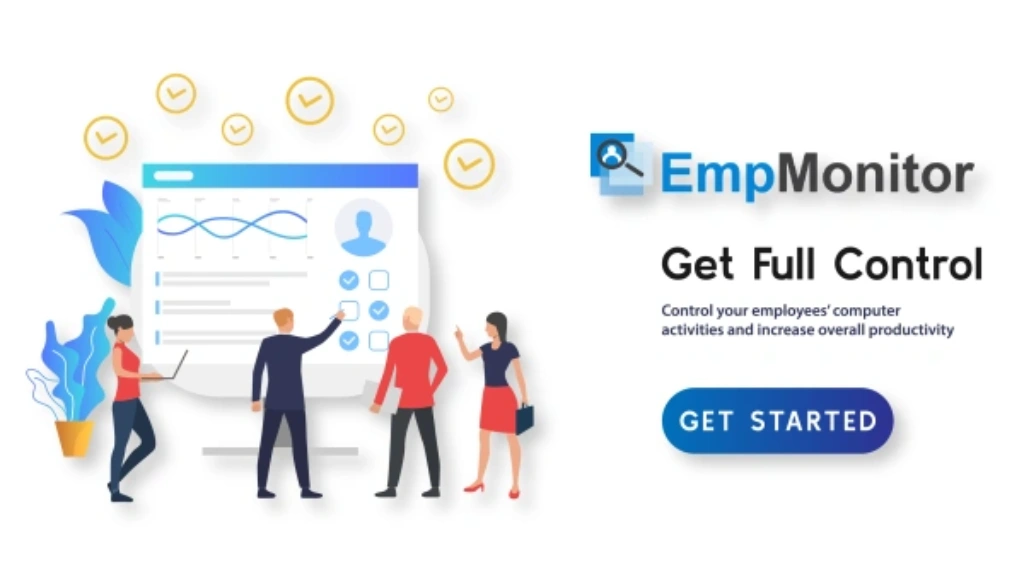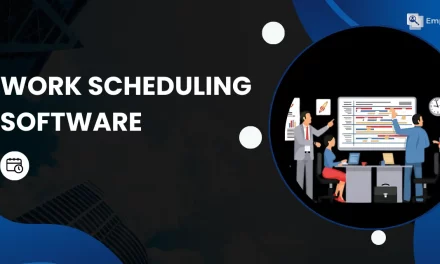Do you want to build a team that’s loyal, motivated, and actually sticks around in 2025? It starts with one word: transparency.
Today’s workforce doesn’t just want a paycheck, they want purpose, clarity, and trust. That’s why every employer needs to rethink the transparency definition business leaders used in the past. The old “need-to-know” mindset doesn’t work anymore. Employees expect to know how decisions are made, how their work impacts the company, and even what the future looks like.
So, what does transparency in business really mean for you as an employer? It’s more than just sharing data. It’s about creating a culture where communication flows openly, goals are clear, and people feel safe asking questions. That’s where the magic happens: engaged employees, better teamwork, and stronger results.
In this blog, we’ll unpack the modern transparency in business definition, highlight what’s changed in 2025, and show you how to bring more openness into your company, without losing control.
If you want to lead a company where people feel valued and stay for the long haul, mastering the transparency definition business is the place to start. Let’s get into it.
In a hurry? Listen to the blog instead!
What is the Transparency Definition in Business?
Transparency in business means being open about how your company operates, both inside and out. It’s the practice of sharing important information with your team, customers, and investors in a clear and timely way.
The modern transparency business definition includes everything from company goals and financials to internal updates, diversity efforts, and decision-making processes. It’s not just about sharing facts, it’s about building real trust through active, honest communication.
For employers, the transparency definition business leaders follow today is all about visibility. Your team should understand what’s expected of them, why decisions are made, and how their work contributes to the bigger picture. That kind of clarity builds stronger teams and more loyal employees.
A transparent company doesn’t just celebrate success, it also owns up to challenges. And that honesty creates a culture of accountability and respect.
Transparency doesn’t mean exposing everything. It means ensuring the right people get the right information when it matters. If done right, it can drive better team performance, deeper engagement, and long-term growth.
In short, transparency isn’t a risk, it’s a business advantage. And in 2025, it’s what sets great employers apart.
Why Transparency Definition Business Is Crucial?
As an employer, you already know how hard it is to build a great team and keep everything moving smoothly. But here’s the truth: without transparency, you’re fighting an uphill battle. The transparency definition business leaders follow today isn’t just about sharing data. It’s about building trust, accountability, and loyalty within your company.
Let’s break it down.
- It Builds Trust
Trust is the foundation of any high-performing team. When people know what’s happening and why, they feel safe. They speak up, ask for help, and share ideas without fear. According to studies, teams with high trust levels simply perform better.
Customers feel the same way. A transparent brand shows that it has nothing to hide. That kind of honesty makes people stick around. When brands admit their flaws and communicate openly, it builds more loyalty, trust, and long-term customer relationships. That’s the power of transparency.
- It Grows Loyalty
People want to know their work matters. Team members feel more engaged if they can see how their tasks relate to your big goals. That engagement drives loyalty.
The transparency definition business experts promote shows that when people understand your mission and see the full picture, they care more. They stay longer, perform better, and even attract more like-minded talent.
- It Creates Accountability
Transparency and accountability go hand in hand. When goals and responsibilities are clear and visible, people step up. No one wants to be the one falling behind.
People stop hiding mistakes when you create a culture in which wins and losses are shared openly. Instead, they ask for support, solve problems faster, and own their performance.
- It Simplifies Reporting
Forget the long, unclear reports. When everyone has clear goals and data is open, reporting becomes quick and easy. You can track KPIs, adjust plans early, and keep meetings short and focused.
The transparency in business definition also makes reporting feel less like a chore and more like a real-time progress check. And that leads to faster decisions and better outcomes.
- It Gives Leaders a Clearer View
Transparency works both ways. Just like employees need clarity, leadership needs a full picture of progress and roadblocks. When goals, metrics, and updates are visible, leaders can make smarter decisions faster.
Without it, you risk misalignment, confusion, and wasted time.
- It Increases Agility
Markets change fast. Transparent companies adapt faster. A team that shares information openly can react quickly to trends, competitor movements, and internal shifts.
People don’t second-guess decisions because they understand the reasoning behind them. And when everyone is informed, they’re empowered to act without waiting for permission.
In 2025, the transparency definition business leaders believe in is no longer optional; it’s essential. It’s the key to building a workplace where people feel respected, informed, and motivated.
Want your team to move faster, perform better, and stick around longer? Start by embracing the transparency definition business mindset, and see how far it takes you.
Also Read:
08 Must Have Skills To Effectively Manage Teams
8 Tips On How To Improve Team Performance
What Is The Best Way To Define Transparency in Business in 2025?
Let’s face it, business today isn’t what it was ten years ago. Customers are smarter. Employees ask more questions. And information spreads fast. That’s why the transparency definition business leaders follow in 2025 must go beyond just being honest.
The definition of transparency in business is about being open, clear, and upfront with everyone. It means sharing what’s going on behind the scenes, whether it’s a win, a mistake, or just a price change. It’s about building trust every single day.
But here’s the catch. Transparency doesn’t happen overnight. You have to work at it, consciously, consistently, and courageously. If you’re wondering where to start, here’s how businesses today define and live by transparency.
Start With Your Core Values

The best way to build a transparent business is to start with values. Real, written-down values, not buzzwords. These values should reflect who you are and what your business stands for.
If transparency matters to you, say it. Better yet, show it. Use your values to guide decisions, big or small. That way, your team knows what’s expected. And your customers know what they’re getting.
A strong set of values creates a culture that supports openness. That’s a big part of the transparency definition business leaders rely on today.
Keep Employees in the Loop
Nobody likes to be left in the dark. And rumors spread when information is hidden. The smart move? Share updates, good or bad, early and often.
You don’t need a huge meeting every time. A short newsletter, a team huddle, or even a casual email can go a long way. The point is, people should hear things from you, not the office grapevine.
The definition of transparency in business in 2025 means leading with communication. Not just when it’s convenient, but especially when it’s hard.
Be Honest About Pricing
Let’s talk money. Many companies still dance around the topic of pricing. That’s not transparency.
If your prices are high, explain why. If they change based on service or volume, show how. Use simple words and avoid tricky terms.
Customers respect businesses that are upfront about costs. It builds long-term trust, and that trust keeps them coming back.
Clear pricing is now a key part of the transparency definition business experts encourage.
Say What You Mean
No one has time for vague statements. People want clarity. So, whether you’re sharing updates with your team, talking to investors, or communicating with customers, get to the point.
Transparency doesn’t mean long reports or complicated language. It means being direct. Honest. Real.
The 2025 definition of transparency in business rewards companies that communicate quickly and clearly.
Share Your Journey
Mistakes happen. Not every launch goes well. But being open about your journey makes your business more relatable and trusted.
When you share stories about challenges you’ve faced, it helps others learn. It also shows that you’re not hiding behind a polished image. You’re real.
How To Achieve Transparency Definition in Business with EmpMonitor?
When everyone is on the same page, the team can perform at its best, and productivity soars. But achieving transparency in business isn’t always easy. It requires the right tools to ensure visibility and accountability across the board. EmpMonitor is exactly what you need to make this happen.
EmpMonitor is a robust employee management software trusted by over 500,000 employees in more than 100 countries. It helps businesses of all sizes maintain transparency, track productivity, and keep teams aligned with clear goals. With its range of features, EmpMonitor ensures that every part of your business runs smoothly and transparently, without the need for micromanagement.
Here’s how EmpMonitor makes achieving transparency a reality:
1. See What’s Happening in Real-Time
With Web and App Usage tracking, you can spot time-wasting websites or distracting apps. It helps you find out what’s breaking focus, without spying or micromanaging. Transparency means knowing where time goes, and EmpMonitor delivers that without disrupting the workflow.
2. Track Time, Not Trust
EmpMonitor’s Automatic Timesheets record time from the moment your team starts their computers. No more manual entries or guesswork. This keeps billing fair and shows how time is spent, building accountability without stress.
3. Manage Projects with Clear Roles
A big part of the transparency definition in business is clarity. Who’s doing what? With EmpMonitor’s Project Management tools, roles are assigned, access is controlled, and tasks are visible.
You can group teams, monitor timelines, and manage both tasks and subtasks, all in one place. Everyone sees what needs to be done and when.
4. Run Smooth Shifts, Every Time
Shift Management ensures that no one is overworked or missing. You can track attendance live, manage schedules, and make quick shift changes when needed. This gives employees structure while showing you the big picture, no surprises, just clarity.
5. Stay Secure and Productive
User Activity Monitoring and Insider Threat Prevention add an extra layer of protection. You can see how tools are used and detect red flags before they become problems. Productivity and security go hand in hand.
EmpMonitor removes the guesswork, replaces micromanagement with insight, and gives your team the freedom to work responsibly. When everyone is on the same page, productivity rises, and so does trust.
Conclusion
In 2025, the transparency definition business is more important than ever. It builds trust, loyalty, and accountability while boosting performance. A transparent business isn’t just about sharing data, it’s about fostering a culture of openness where everyone knows where they stand.
By embracing this approach, you’ll create a more motivated and engaged team. As the transparency definition business evolves, tools like EmpMonitor make it easier to stay on top of everything without micromanaging.
With EmpMonitor, you can track productivity, manage projects, and ensure a transparent, efficient workplace. Start building trust today for long-term success!
Frequently Asked Questions
Can transparency definition business reduce micromanagement?
Absolutely! The transparency definition business helps remove the need for micromanagement. When roles, tasks, and expectations are clearly defined, employees can be trusted to take ownership of their work. With tools like EmpMonitor, businesses can track productivity and progress in real-time, providing insights without the need for constant check-ins, fostering a culture of trust and accountability.
Is transparency definition business only relevant to large companies?
Not at all! The transparency definition business is important for companies of all sizes. Whether you’re a small startup or a large corporation, transparency creates a culture of trust and alignment. Small businesses, especially, can benefit from clear communication and open decision-making as they build their teams and scale their operations.
How does transparency definition business contribute to faster decision-making?
The transparency definition business accelerates decision-making by ensuring that everyone has access to the same information. When data, goals, and progress are shared openly, leaders can make informed decisions faster, and employees can act with greater clarity. A transparent environment minimizes confusion and speeds up the flow of decisions, driving agility across the business.

















